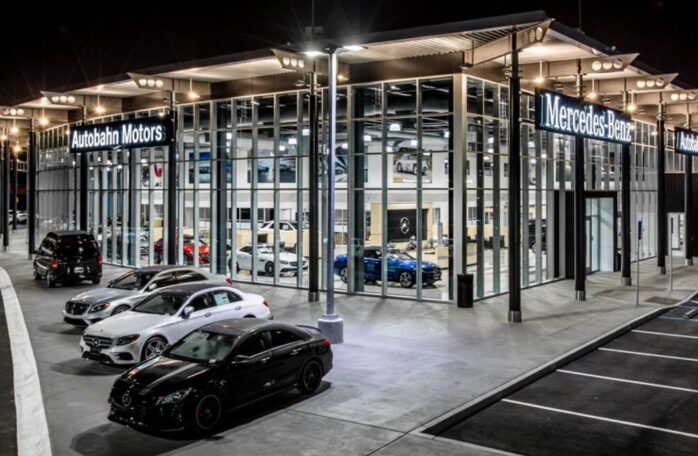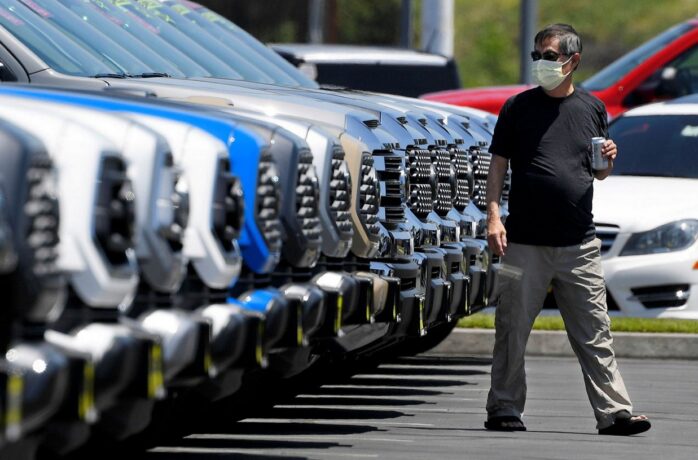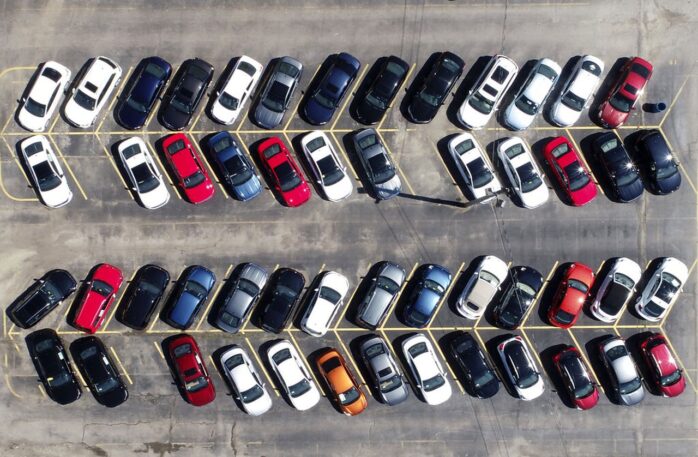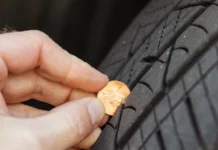
If you’ve been trying to buy a new car lately, you may have noticed that they are in short supply. This is because there is a current shortage of cars on the market, and dealerships are taking advantage of this by hiking up prices. In fact, dealership profits have never been higher!

What the Profits are Looking Like
The current car shortage is resulting in record dealership profits. A report from the National Automobile Dealers Association (NADA) states that the net profit before tax went up 128.2% from 2024 for average new car dealerships. This was from January to September of 2024. It was found that dealerships that sell domestic cars had a net profit increase before tax of 112.6%, while dealerships selling imported vehicles had an increase of 140.6%. These figures are staggering and are only going to continue to increase as the car shortage worsens.
What is Causing this Shortage?
There are a few factors that are contributing to the current car shortage. The obvious one being the Covid-19 pandemic. Those who must commute to work are doing their best to avoid public transportation, and therefore, are buying cars. Those desperately looking to buy a vehicle to avoid public transportation are finding that the only option is to pay a high price for a used car. This is a difficult situation for the masses as many employers require their employees to be at work, without the option to work from home. The safest way to avoid public transportation is to drive your own vehicle, but with the current car shortage, that is becoming increasingly difficult to do.
However, this is not the only reason for the shortage. Many people are choosing to buy used cars instead of new ones due to the high prices of new vehicles. This is creating a shortage of used cars too, which is also resulting in their prices rising significantly. Stricter emissions regulations have caused automakers to produce fewer cars than ever before. Electric and hybrid cars do not have the same emissions as traditional gasoline-powered vehicles. Therefore, even though there are more people who want to buy cars, automakers are not able to meet the demand.
Furthermore, there are inventory shortages that are driven by multiple factors. These include a delay in the production of microchips, parts, and materials that aren’t being produced or delivered on time, a significant decrease in the workforce (mainly due to the Covid-19 pandemic), emergency shutdowns, and unforeseen interruptions in international supply chains. Nearly every automaker at one point had to halt production in 2024 from a shortage or delay in receiving parts, especially microchips.

What Does This Mean for Consumers?
The current car shortage means that consumers will have a harder time finding the vehicle they want and will likely have to pay more for it. If you’re in the market for a new or used car, it’s best to start shopping now so that you can eventually find the best deal possible—however long that may be. And remember, don’t be afraid to haggle! Many dealerships are willing to lower prices, at least a little if they know that they have a customer locked in.
Unfortunately, you need to be prepared to pay more if not far more than you’d expect. It’s best to do your research ahead of time so that you know what a fair price is for the car you’re interested in. Keep in mind that the shortage is only going to get worse, so don’t wait too long if you’re in the market for a new set of wheels.
You’ll likely find prices to gradually decrease toward the end of the year. This is primarily due to dealerships attempting to sell at discounts to make last-minute efforts to increase their annual sales. In December, many dealerships hope to sell all their last year model vehicles so that they can replace them with newer models for the next calendar year. So, if possible, you’ll want to start shopping more aggressively during this time.
What Does This Mean for Dealerships?
The current car shortage is great news for dealerships. They are able to hike up prices and increase profits significantly. This is also good news for those in the automotive industry, but it’s bad news for consumers, especially as the shortage worsens. All dealerships need to post a Buyers Guide on all vehicles for sale indicating what systems of a particular vehicle are covered and the duration of the coverage. Auto dealerships can purchase car dealer supplies including Buyers Guides from MBR Marketing at https://mbrmarketing.com/dealer-supplies/sales-forms/ftc-buyers-guides-and-holders.
It’s important to understand that all dealerships must sell cars to stay in business. None of the previously mentioned circumstances have or will diminish the cost of overhead, payroll, and other ancillary costs for dealerships. In fact, newly franchised dealerships are starting to focus on selling used vehicles–those with higher mileage bands, and older models and categories that haven’t really been sold before. Dealerships are taking advantage of the increase in demand for buying new and used cars, leaving them with massive profits.

What Is Being Done to Address this Issue?
The car shortage has caused automakers and dealerships to take improved measures in order to increase production. For example, General Motors is looking to form new and strategic partnerships with semiconductor chip makers to help solve the shortage of chips. Ford and one of their partners are looking to build a new plant in Detroit that will have the ability to produce more than 750,000 vehicles per year.
The total investment for these plants totals $11.4 billion. It has also created over 11,000 new jobs with a focus on building electric vehicles and batteries. Some dealerships are now allowing customers to order cars online and have them delivered directly to their homes. In addition, automakers are working on increasing production in order to meet the increasing demand. While this is good news for consumers, it will likely take some time before the shortage is resolved. In the meantime, you can expect to pay more for the car you want.











